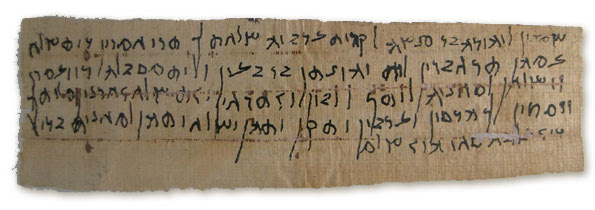Although it is not mentioned in the Tora as one of the seven typical fruits of Israel (wheat, barley, grapes, figs, pomegranates, olives, and dates), the etrog is a fruit indigenous to the land of Israel. Maimonides has already suggested this fact in his “Guide for the Perplexed,” where he explained that the Tora instructed us to use four specific plants, etrog, palm branches, myrtle, and willows, which were easily obtainable in the land of Israel.
The etrog was such a predominant Jewish symbol that it could be found in many mosaics and coins of ancient Israel. For example, in the coins of the year 66 CE, before the destruction of our Second Temple, and especially in coins minted in the years of the of Bar Kokhba revolt, 130- 135 of the Common Era.
Back then, supported by Rabbi Aqiba, Bar Kokhba led an army that tried to rebel against the Roman empire and rebuild an independent Jewish state, but the rebellion failed.
The use of etrogim in the coins of the Bar Kokhba rebellion is even more meaningful when we remember the great discovery of the Israeli archaeologist Yigal Yadin, who found a perfectly preserved letter in the caves of the Yehuda Desert, written by Bar Kokhba himself, in which he describes the difficulties of his troops with some unique supplies.
This is the text of the letter.
“Shimon [bar Kokhba] to Yehudah: …. I’m sending two donkeys and two men. I sent them to Yehonatan bar Masabla … you must ask them to carry donkeys and bring them back loaded with palm branches [lulabim] and etrogim. And also send other [men] to bring to our camp branches of myrtle [hadasim] and willow branches [‘arabot]. Make sure tithing (ma’aser) is already separated. Send all to my camp. Our army is very large. Shalom“.
And this is the original letter of Bar Kokhba in ancient Hebrew

While originally from Israel, the etrog is also found on the coasts of the Mediterranean. Some areas are famous for the extraordinary quality of their etrogim. Calabria (Italy), the island of Corsica (France) or the island of Corfu (Greece). One can find etrogim also in Lebanon, Libya, Morocco, etc.
But, how did the etrog come to those parts of the world?
The most accepted hypothesis today is that the etrog was brought from Israel to other areas of the Mediterranean with the dispersion of the Jews throughout the world, with a very specific mission in mind: to be used during the holiday of Sukkot.
Why do researchers believe that?
Because unlike the lemon or other citric fruits, the etrog tree is relatively fragile, very sensitive to diseases that can affect its root, and lives for relatively few years (12-15, unlike the lemon, which can live 25 to 30 years). In addition, the etrog demands much more water than other citric trees; and the fruit has almost no pulp. For what other reasons have etrogim been planted in orchards along the Mediterranean Sea?
For a long time, etrogim were not grown in the land of Israel, and these “foreign” etrogim supplanted the etrogim from Israel. Only in the mid-19th century, on the initiative of Sir Moses Montefiore z”l, that etrogim were grown again in Israel.
Many Jews in the diaspora use etrogim from Morocco, Italy, Yemen, etc. But it is good to remember that those etrogim also have solid Jewish roots…
See this interesting article about Calabria and the Etrogim https://www.calabriatheotheritaly.com/santa-maria-del-cedro-diamante-citron/









